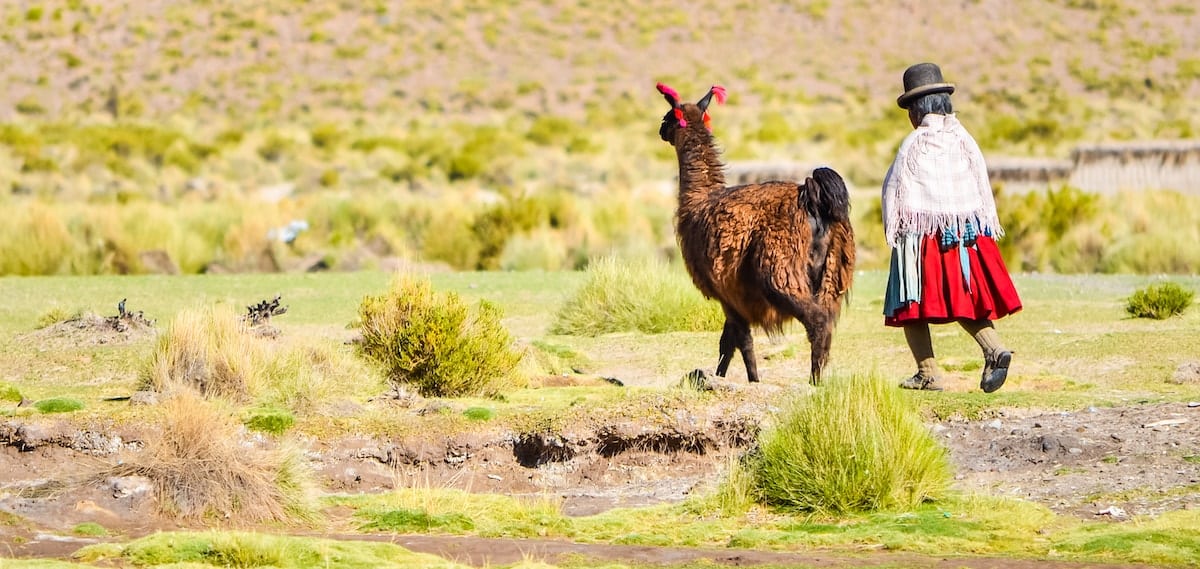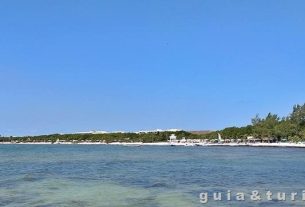Taking a trip to Latin America is one of those experiences that changes the way we see the world. We have come into contact with countless cultures, different peoples and realities, we give up stereotypes, learn a little about the history of the region and, consequently, ours. It is not for nothing that this is one of my favorite parts of the globe – to the point of bringing it tattooed on my arm.
Throughout this traveling career, I have made numerous itineraries in Latin America that culminated, between the end of 2017 and the beginning of 2018, in a six-month backpack that traveled all the kilometers that separate Mexico from Peru. I still have some countries to cross the list, but I decided to put here all the tips and information that I gathered during this experience. See now how you can also plan a super trip through Latin America.
Valparaíso in Chile
P.S. I have traveled to all countries in Latino mainland, except Belize, Guatemala, Honduras and Bolivia. But I didn’t do everything from a shot or on the same trip. This post was written after having traveled for six months between Mexico and Peru and also with information and experiences collected on other trips around the continent. The text does not include trips to Cuba and other Caribbean islands, because I still lack to visit them.
Planning and Bureaucracies
Visas and borders in Latin America
Brazilians do not need a visa to enter any Latin American country. We are subject, however, to paying immigration entrance fees, especially in Central American countries, specifically Nicaragua, Honduras, El Salvador and Belize. I have a full post with all the requirements to cross borders in Central America.
The ID card can only be used to enter the countries of South America. This means that, from Panama up, you have to travel with a passport with at least six months of validity. Even if you only stay in the southern part of the continent, I advise you to take the passport if you are traveling through many countries, especially if you want to cross land borders, as this avoids inconvenience.
In addition, it is always recommended to have with you exiting the country (even if it is a cancellationable reservation), proof of hotel reservation and sufficient financial resources to keep during your stay. Some countries are more upset about this kind of demand. Stay tuned for this when traveling through Central America, Mexico and Colombia, which are often more demanding in immigration. Moreover, it is always better to be safe than to have a problem in the entrance, right?
Vaccines required for Latin America
It is essential to have an international vaccination card with the yellow fever vaccine up to date. This is the only mandatory vaccine to travel the continent, but there are other recommended ones, such as hepatitis A and B, tetanus and diphtheria, typhoid fever and meningococcal infection. You should look for a health center in your city or a Traveler Health Care Center to ask for directions and put the vaccination schedule on time.
From 2021, some countries also began to require proof of vaccination against Covid-19 at the entrance. Here’s how to download your bilingual certificate in the SUS app.
Travel Insurance
Travel insurance is mandatory in Ecuador, Venezuela and Cuba. Since the reopening of the post-pandemic borders of COVID-19, Argentina has also started to require travelers a policy with coverage for the disease. In other countries, it is optional, but our recommendation is that you never travel without, because in the event of any medical emergency, theft, misplacement of luggage or need to interrupt the trip because of some great unforeseen, you will be calm.
To quote your insurance, we recommend Insurance Promo, a search engine that compares the best prices and coverages in the market and helps you find the best value for money for your trip. Click here to do your search and ensure a discount coupon for blog readers or use the box below:
For those traveling by car in Latin America
Many people choose to make this route by car, motorhome (my dream of consumption) or motorcycle. If you are one of those people, I say that I made my entire route by bus, plane, boat or public transport and I have no practical or specific information for those who decide to put their hand on the wheel.
In the bureaucratic part, however, I can say that you will need to acquire a Green Card Insurance, which is a mandatory document to drive passenger vehicles among the member countries of Mercosur. For those who cross the Panama Canal, I suggest reading the post of the Viajo Logo Existo.
How much it costs to travel in Latin America
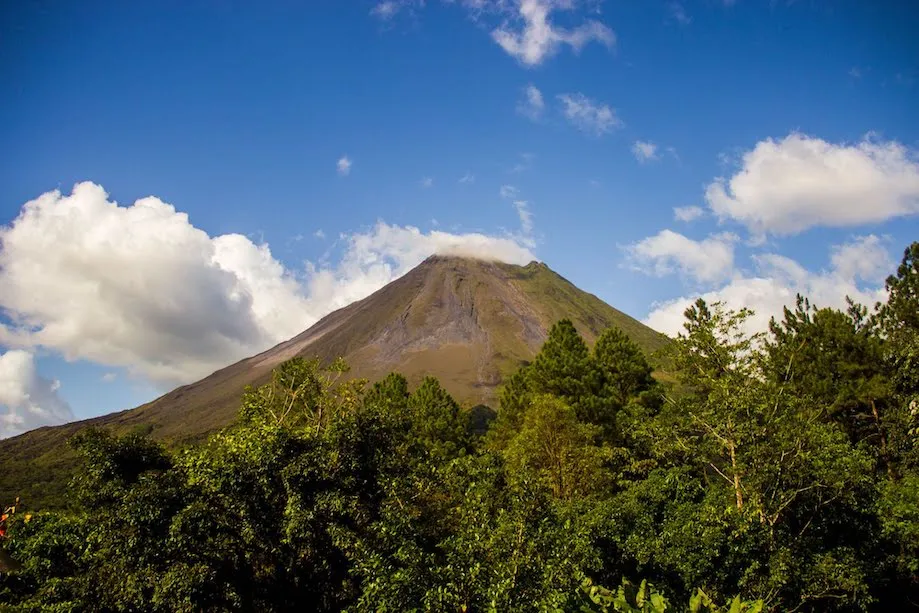
Volcano in La Fortuna, Costa Rica
The value of a trip like this will depend a lot on your style of consumption. Latin America is not one of the most expensive regions in the world, but some areas, of more pronounced tourist exploitation, can be greatly inflated. I usually calculate my travel budgets by establishing an average daily expenditure, which varies from country to country, and adding fixed amounts, such as international travel insurance, plane tickets (buses, because they are cheaper, usually enter the daily quota) and more expensive attractions.
If you, for example, make a point of spending a few days on a boat in Panama or visit San Blás, it pays to add the value of this tour in the budget, since it will far exceed the daily quota. Museums, walking tours and other more common attractions can enter the middle of daily spending.
On average, for a route without luxuries, but without major privations, I would say that it is possible to travel in Latin America spending between 40 and 80 dollars a day. This variation is due to your style of travel. If you want to eat always at restaurants and never stay in hostels, you can even exceed 80 a day. Those who only take snacks in the backpack and stay in a dormitory, can stay below 40 dollars in some countries.
There are always those who do for less or for more, but I believe that these values cover comfortable accommodation, menu-style meals, transportation and basic attractions. Value will not be the same for all places. The most expensive countries in the region are undoubtedly Brazil, Costa Rica, Chile and Uruguay. In countries such as Bolivia, Colombia and Ecuador will be lower.
The value of tickets will vary according to the destination of departure and return, the season of the trip and, of course, of your luck, but in general you can fly to any country in the region paying between R $ 800 and R $ 2000. The travel insurance, essential for such an adventure, comes out from R $ 200 per month of travel – or seven reais per day.
Read also:
How much does a backpack cost in South America
Security in Latin America
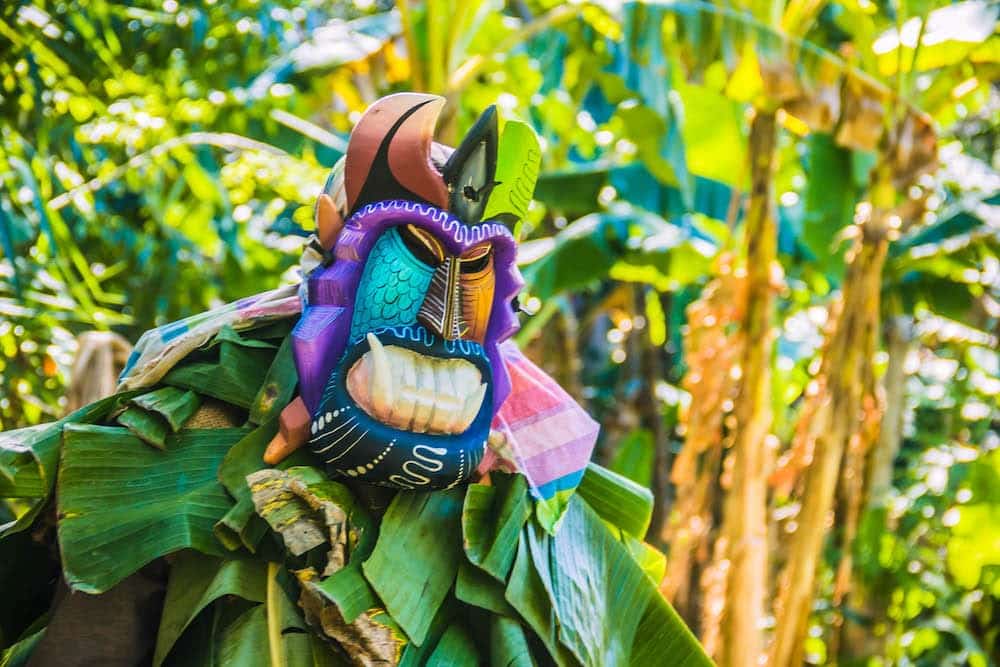
Traditional Festival of Diablies in Costa Rica
One of the most violent regions of the globe, Latin America suffers from political instability, urban violence and, in more serious cases, with entire areas dominated by organized crime. This, in no way, is an impediment to travel in Latin America, but it serves as a warning not to let go of our custody.
It is important to note that often the view we form of a particular news-based country is unilateral and stereotyped. Most of the tourist circuit in these countries is quite safe. Never at any point in my travels through Latin America have I felt my physical integrity threatened.
The biggest risks faced by travelers are theft of money and equipment – most often, theft, but there are also reports of robberies – and scams targeting tourists. To protect yourself, do not walk with all your cards, have a certified copy of your documents, put your passport and a cash reservation in a safe place.
In addition, you should keep inside the tourist circuit, unless you have local references that facilitate the opposite, and find out about which areas you can and can not go. I always like to listen to residents about security in certain neighborhoods and cities, especially in the most violent capitals and places. As in Brazil, violence is not a widespread phenomenon, even in the worst index countries, such as El Salvador and Guatemala, and affects certain neighborhoods and regions with very different intensities.
Crossing borders by land, air or sea?
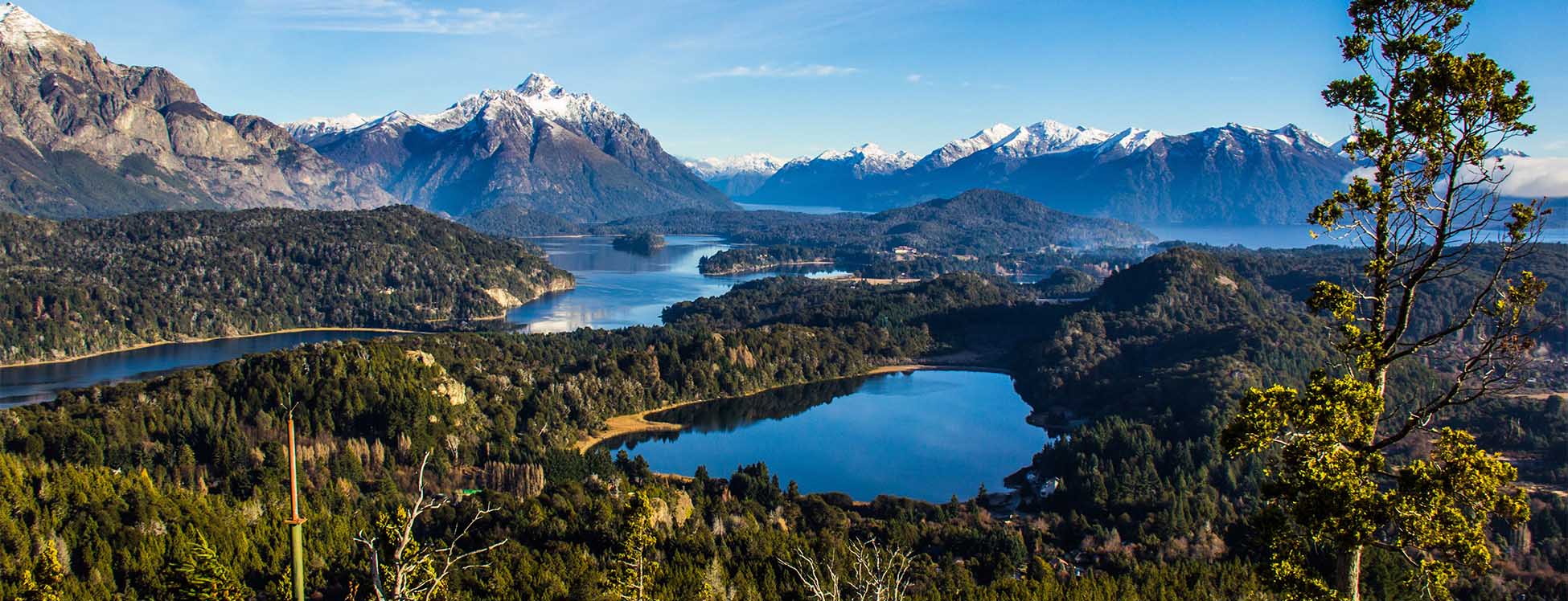
Bariloche, Argentina
You can make almost the entire trip by land, both with regard to infrastructure and security. However, there are some problems in this decision. Type the distances traveled, especially in South America. Either you make too many stops, or you will need to spend many hours sitting in a buser seat. Since much of Latin American territory is mountainous, the roads gain many, many miles longer than the distance in a straight line.
I opted for the plane in some stretches of the trip: to go from Cartagena to Bogota and from Bogota to Quito. It was two low cost flights of less than two hours that saved me a day of travel by land. If you have more time, you can reduce these distances by making more stops, but remember that crossing borders by land is always more perrebe than by air. When deciding, it is worth weighing the cost / benefit of the different possibilities to save time and money.
Another passage that I covered through the air was between Panama City and Cartagena, because this is the only point on the continent that you can not cross by land, as I explained here. There is also the possibility of crossing by boat, a more fun alternative, but also more expensive and time consuming.
Be prepared to spend good hours in transport. Even at relatively short distances, such as those traveled in Central America, going from one country to another can represent 12 or even 18 hours by bus. Most of the time, it is possible to find comfortable vehicles from tourist companies paying a little more for it. If you can afford the investment, it is worth it. If you are going to use local transportation, always remember to check the number of the chair, since in some places they sell tickets to travel in the corridor, without a defined seat. I saw this happen with tourists in Costa Rica.
The most beaten tourist routes, such as those that descend Central America through the Caribbean and the Colombian Caribbean region, always have companies that make the transfer between cities. This is a more expensive alternative, but it is often faster and more comfortable than public transportation. As I said, everything should be analyzed on a case-by-case basis, according to your budget, roadmap and needs. Therefore, the best thing to do is to close each leg of the trip at a time, analyzing all possible alternatives.
Travel Itineraries in Latin America
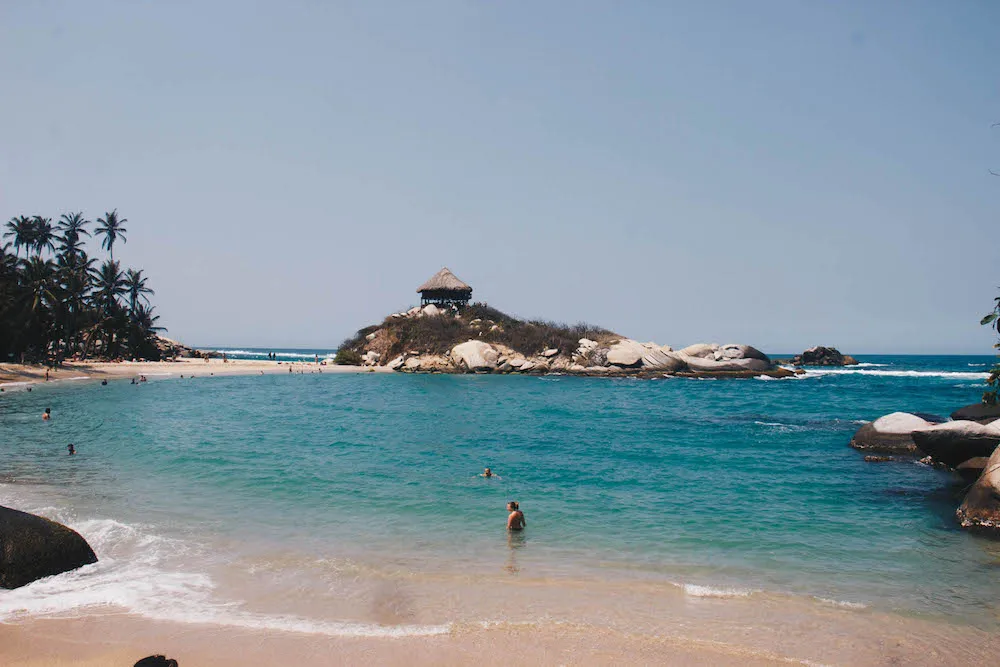
Tayrona Park, in Colombia
Planning a trip through such a large region can be a real challenge. With so many amazing attractions, how to decide which ones to visit? This decision goes through issues such as time available for travel, interests and budget. See below for some itinerary suggestions.
Between 15 days and one month
If you will enjoy the holidays to take such a trip, I advise you to focus on just one country. There are some itineraries already established in the region and in the links below you can find all the tips to plan your trip through each Latin American country. Among the itinerary ideas for 15 days and 1 month are:
Travel in Latin America: between two and ten months
The trip through Latin America that is in the dreams of every backpacker involves crossing the continent, walking all the way between Mexico and Argentina. You can do this with something between six and 10 months depending on your travel pace and the number of countries visited. Anyone who wants to focus only on South America can schedule for something between three and six months. Thanks to the geography of the continent, the itinerary already has a more or less intuitive order, with some points on which a decision must be made. For example:
The Atlantic or the Pacific?
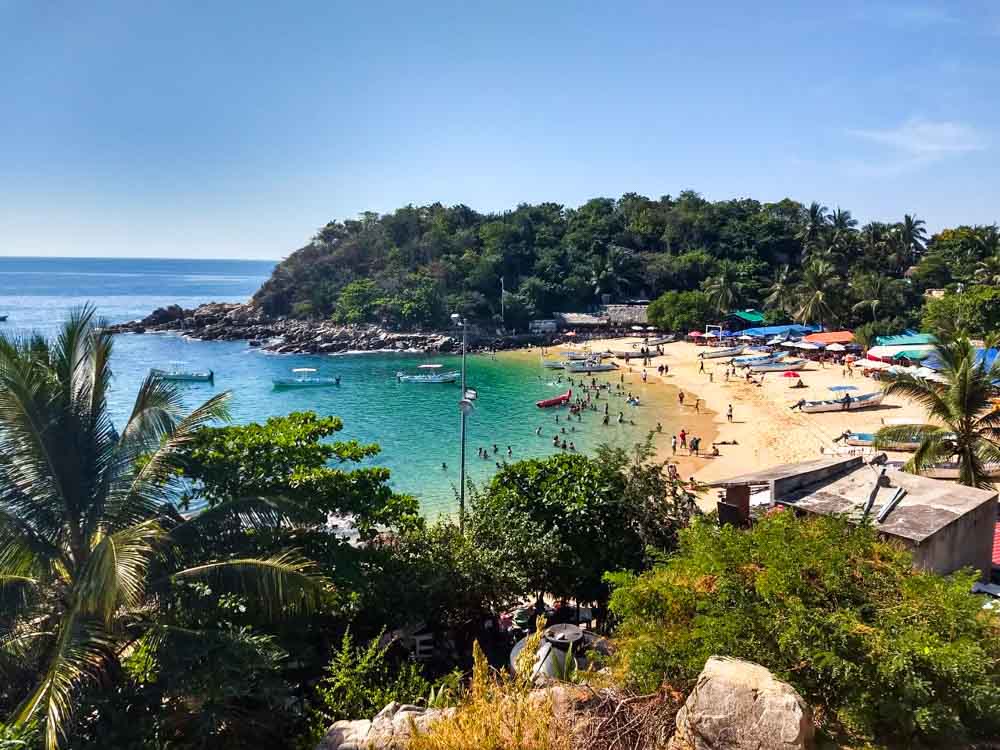
Puerto Escondido on the Pacific coast of Mexico
That’s the million-dollar question for those who will cross Central America and Mexico. Choosing one of the back means giving up the beauties of the other. On my trip, I started going down the Pacific, from Mexico to Costa Rica and, when I arrived in the south of the country, I returned to San José and crossed to the Caribbean, a route that I took to Colombia. The reason was logistical: it was easier to cross the Panamanian border there and go to Bocas del Toro, my main interest in the country.
Although Caribbean beaches awoke postcard dreams, there is something that almost no one says: the climate in the continental Caribbean is extremely unstable, it rains almost every day and the days are cloudy and damp days largely of the weather. The Pacific has beautiful beaches, still little explored and a much more stable climate. In Mexico, for example, I chose to go to Puerto Escondido instead of Cancun and I believe it was a beautiful choice.
Backpack in South America
To go to Venezuela or not?
Crossing Panama through Colombia and vice versa is the natural way on this journey. Here is the question: what about Venezuela? You stay out? I visited the country quickly on another occasion four years ago at a time of relative political stability. Depending on the time of your trip, you may choose not to pass through there. The advice I have received from Venezuelans is to avoid demonstrations and places with large concentrations of people, be careful with irregular taxis, avoid moving overnight and certain neighborhoods of the capital. Caracas and large cities tend to be more in the political buzz. Other more tourist areas are considered safe for foreigners.
According to the Independent, Venezuela’s land borders with Brazil and Colombia are dangerous thanks to traffickers and armed groups, at risk of kidnapping. The border with Colombia is closed for vehicle traffic, but open for pedestrian crossing. The coast and islands are usually safe for tourists.
Other borders in South America
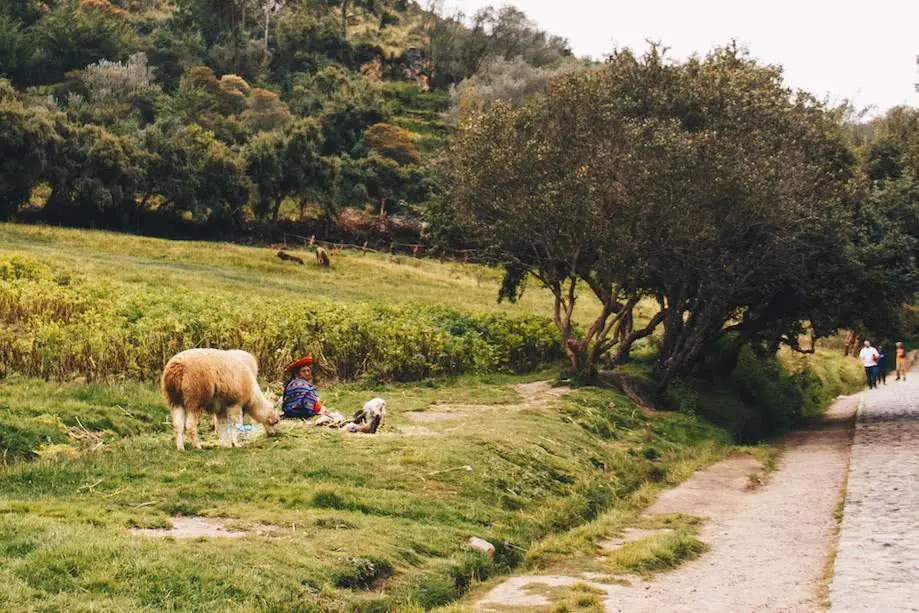
From Colombia, the natural path is to go to Ecuador, or vice versa if you travel in the other direction. This route can be done by land, from Bogota or Cali. However, there is no direct transportation. You should go to Ipiales (from bus, from Bogota, there are about 20h. From Cali, about 11h), in Colombia, and take a taxi to the border. From there, cross on foot to Ecuador and take another taxi to the Tulcán bus station. From there to Quito is about five hours. The time to cross the border, however, can be stressful. I, as I said, made the journey by air, but friends who were following a trip with me went by bus and reported spending five hours standing in line between the two countries.
Read also:
Itineraries traveling through South America
How much does a backpacking in South America cost
From Ecuador, in general, it passes to Peru. This border is much quieter to cross by land because there are direct buses from both Quito and Cuenca. You just need to go down to stamp the passport for a few minutes. The strategy is to stop in Mâncora, Peru, to take a few days from the beach and avoid the long displacement to Lima or Cusco.
From Peru to Bolivia is an already crystallized route in the tourist circuit, and you will find even transfers from agencies that make the journey from Puno or Arequipa to La Paz or Uyuni. From Bolivia, it remains to decide whether to jump Paraguay and head to Argentina. I consider entry through Jujuy, Argentina, the best route to this stage of the trip. You can explore the north of the country a little before heading to Mendoza and from there decide if you will cross to Santiago or follow down to Buenos Aires or Patagonia Argentina.
From Buenos Aires, it is natural to pass to Uruguay on a boat crossing. Through Patagonia, there is another opportunity to pass to Chile in El Calafate, to visit the Torres del Paine. Remembering that the best time to visit the region is in the summer, and this can influence your decision.
All travel tips in Latin America, country by country
What to pack for your trip through Latin America
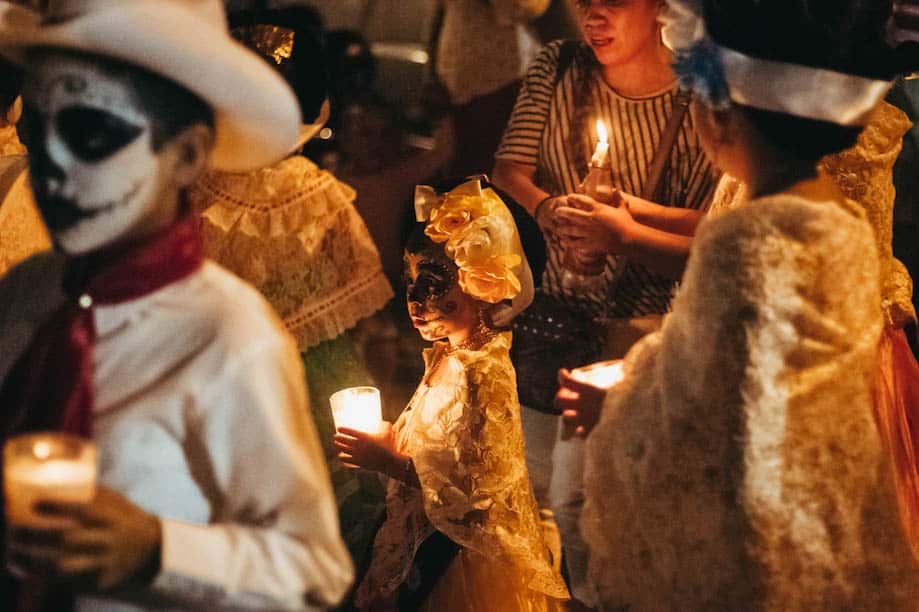
Celebration of the Day of the Dead in Mexico
A trip through Latin America involves such distinct climates, ranging from the mountain to the beach, city and countryside. Therefore, it requires careful planning of luggage. There are many people who are lost at this time, so I decided to share my base list of what to take in the luggage for the six months I traveled between Mexico and Peru. All the items below I put on a 50-liter backpack of Quéchua and a 20-liter maple backpack.
Clothes and shoes for the day
- Small strip-colos bag
- Sunglasses
- 2 Necklaces (one more for night and one I use on a daily basis)
- 2 bikinis
- 1 Canga
- 1 Scarf for the neck
- 3 Dresses (two for everyday and one to go out)
- 1 wool blouse
- 1 plaid flannel shirt
- 1 shirt jeans
- 3 blouses to go out
- 1 panty black panty of wire 80
- 6 T-shirts
- 2 regattas
- 1 Jeans
- 3 shorts jeans
- 1 Legging
- 1 skirt
- 1 All Star (I like to take it because it serves both day by day and to go out at night. After this trip, I bought a New Balance that works much better to hit leg on the trip because it doesn’t tire the calf so much)
- 1 Havaianas
- 2 Bras for daily use
- 2 Tops
- 15 panties
- 7 common socks
- 2 head scarves
- 1 Rasteirinha
- 1 pajama
- 1 exit of beach
Equipment for hiking, nature and mountain
I am not “A” person of the mountain, but I did some walks that involved long walks and, so I put basic trekking equipment in my backpack.
Necessaire
- Sunscreen
- Moisturizer for the body for travel
- Barbers and Drinkers
- Shampoo
- Conditioner
- Cream to comb
- Toothpaste
- Toothbrush
- Lip hydrating
- Soap
- Deodorant
- Hair of hair
- Clips
- Wet wiped legends
- Quick-drying towel (bought in Decathlon)
- Ear Protectors
- Cover-eyes
- Spray to clean lenses
- Ecobag (weared to put on dirty laundry)
Electronic equipment
- Macbook Air + Charger
- Protective laptop cover
- Adapter of international sockets
- Pen Drive
- Memory cards for the camera
- Mobile Phone + Charger + Headphones
- Canon EOS Rebel T3i DSLR Camera + Charger
- Lenses 50 mm
- 18/135mm lenses
- Travel diary
- Agenda / planner / Block
- 2 Pens
- Kindle + Charger
Farmacinha
Here it varies greatly according to your medical needs. Remember that anywhere you can buy basic medication.
- Anti-inflammatory (Nimesulicide, Ibuprofen)
- Analgesic and antithermal
- My remedy for hypothyroidism (important to include your constant use remedies in sufficient quantity for your trip)
- Relaxing muscle
- Insect repellent
- Contraconceal Anti-conceptional
- Absorbt as a, Absorp
- Camines
- Melatonin
- Anti-allergic (Loratadine)
- Sparadrape, gauze and cotton
- Dramin
- The Rhythss
- Something for muscle pain, Gelol style
Do you have any further questions to plan your trip to Latin America? Any topics missing from the post? Leave it in the comments and we will do our best to keep this guide complete.

Sign up for our newsletter and stay up to date with exclusive news
that can transform your routine!
Warning: Undefined array key "title" in /home/storelat/public_html/wp-content/plugins/link-whisper-premium/templates/frontend/related-posts.php on line 12
Warning: Undefined array key "title_tag" in /home/storelat/public_html/wp-content/plugins/link-whisper-premium/templates/frontend/related-posts.php on line 13

